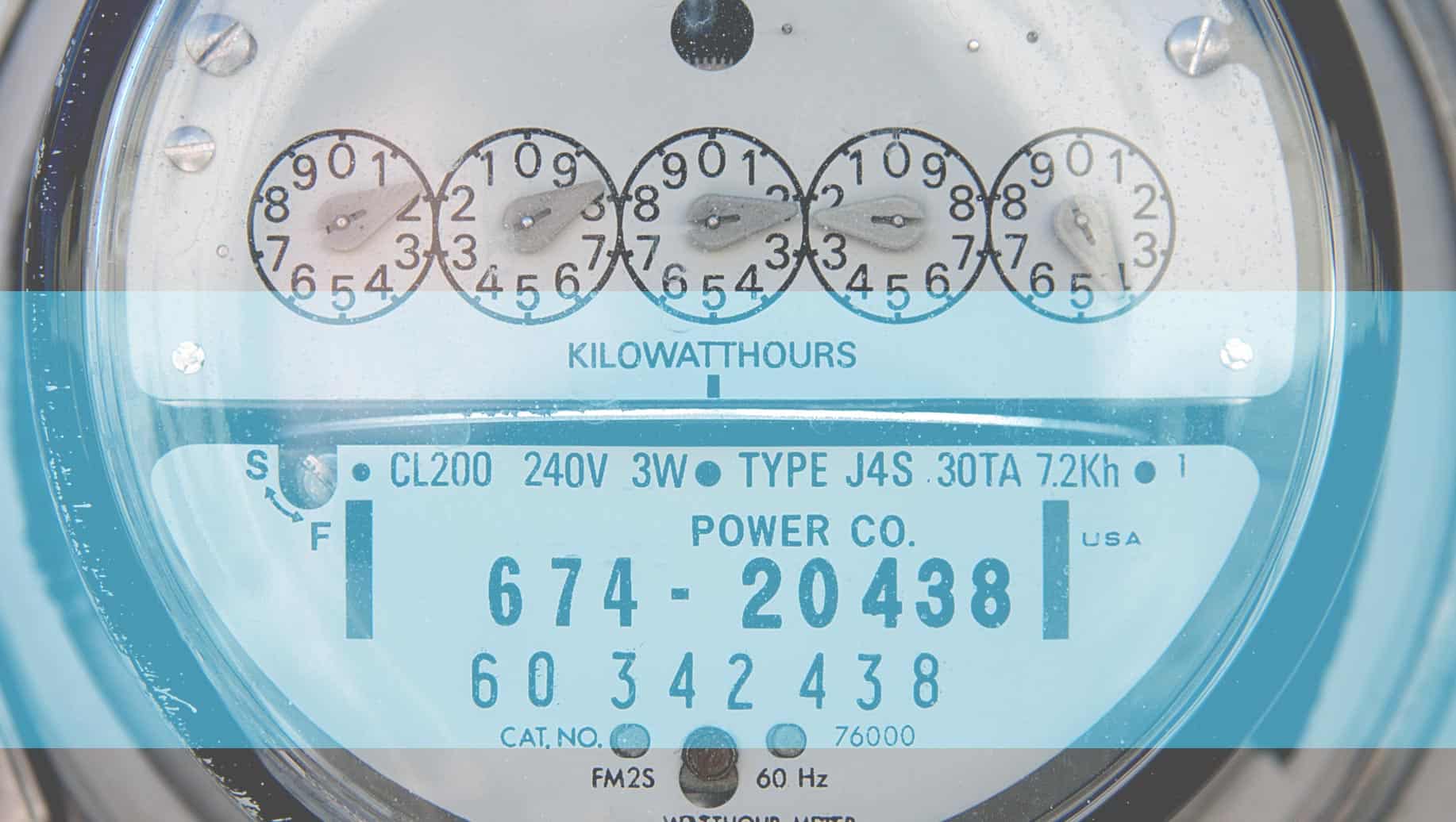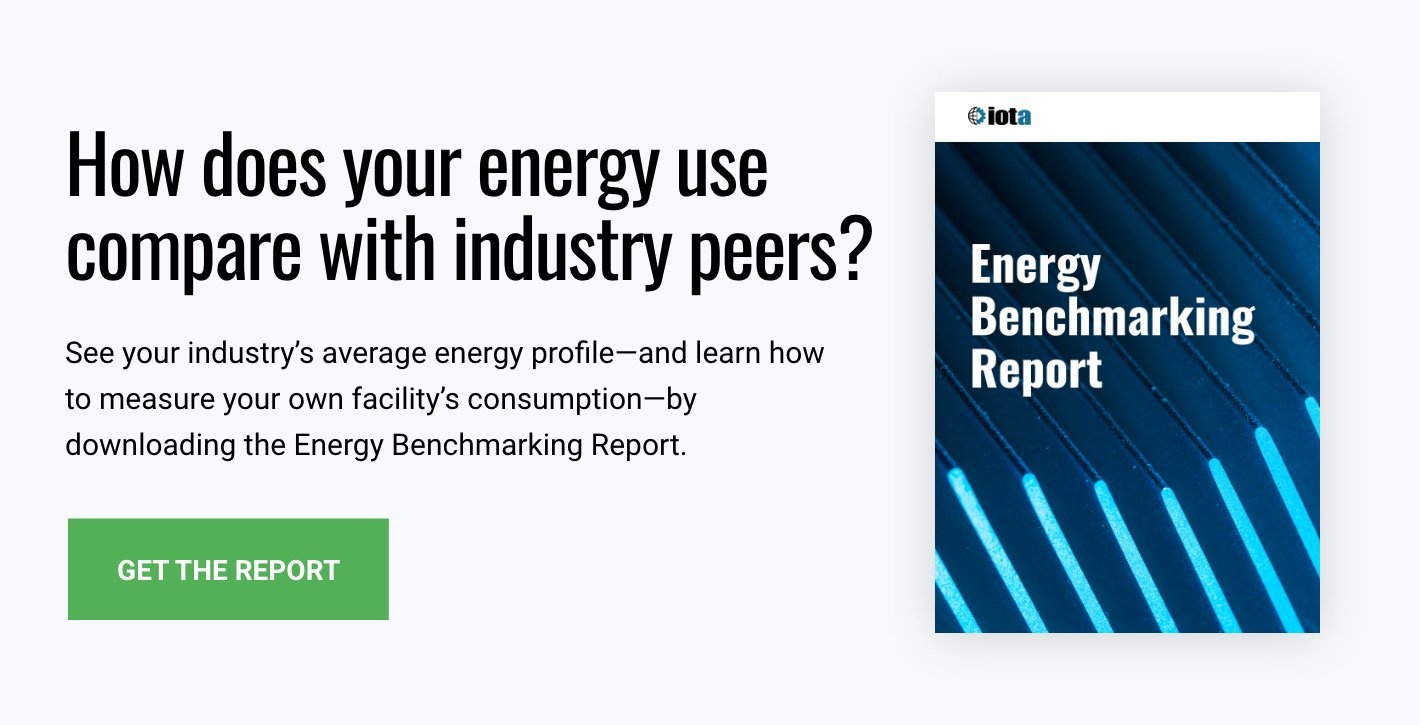As a facilities manager, your primary objectives are threefold:
- To ensure all building systems remain in good working condition continuously.
- To maintain an environment that supports building tenants and productivity.
- To reduce the operating costs associated with your facility.
On top of that, an increasing number of facilities managers are being asked to take sustainability into consideration as part of their overall management strategy.
Commercial building energy monitoring can help you accomplish all four of these objectives.
The tool most managers use to do it: a cloud-based energy monitoring system. Keep reading to find out what it is, and what you can do with it.
What is cloud-based energy monitoring?
[bctt tweet=”By understanding your facility’s energy consumption—both how much energy is used and how it’s being used—you can better manage it.” username=”iotacomm”]
The theory behind energy monitoring is simple: By understanding your facility’s energy consumption—both how much energy is used and how it’s being used—you can better manage it. Thanks to technology, cloud-based energy management systems are the easiest way for facility managers to gain those insights. Not only do such systems assist in gathering real-time energy data, but they also analyze the data and recommend actions you can take to become more energy efficient. The “cloud” simply refers to the fact that the monitoring system itself is hosted from a remote location rather than your own. Cloud-based technology benefits you because:
- It allows you to access your energy analytics from any device with an internet connection. Even if you’re not present in the building you can still view and manage the system. And if you have more than one building to manage, you can access the information for all of them at once.
- It reduces your IT burden. You don’t have to handle updates and maintenance of the system because it’s all done for you.
- It reduces data storage-related costs. All the data collected during energy monitoring is stored and processed by remote servers (cloud servers), which means you don’t need a server to maintain and manage the data and information.
Cloud-based energy monitoring systems are the tool of choice for facilities managers, specifically for the four use cases mentioned below.
Cloud-based Energy Monitoring: 4 Use Cases
- Reducing your demand charge.
A significant portion of your utility bill is made up of demand charges—the additional fees utilities charge for providing a constant supply of electricity. Those fees are calculated by multiplying your building’s maximum hourly power requirement (this peak usage need only last for a few minutes for you to be charged for it) over a billing cycle by a specific rate. With cloud-based energy monitoring, you can reduce your maximum hourly power requirement with peak shaving, thereby significantly reducing your demand charges.For example, monitoring may reveal that your peak energy use was 1,000 kilowatts on a 90-degree day at 1 p.m. It would also reveal that the peak was created because all your air conditioning units kicked on at the same time. Your system should recommend staggering the AC units to turn on at different times. Shaving 500 kilowatts off your peak demand will show up as reduced demand charges on your next bill. - Reducing costs related to equipment failures.
Equipment failures can be costly, whether it’s production downtime due to a machine failure or emergency maintenance for a broken AC unit. Energy monitoring allows you to gather data related to the power consumption of your most critical machines and equipment; over time, that data can provide an understanding of the performance anomalies that lead to equipment failures. Cloud-based energy management systems that incorporate machine learning can give early warning alerts when failures are likely, so you can proactively address problems before they start. - Optimizing your building’s energy use.
Are you striving to reach sustainability goals? Cloud-based energy monitoring can help ensure your building is eliminating wasteful energy practices and making the most of the energy it consumes. If a compressor or pump is running longer than it needs to be, energy monitoring would identify it. Further investigation might reveal why it’s happening—perhaps something related to that function isn’t working properly. Having that information at your fingertips allows you to correct the problem and eliminate the waste. - Reducing your energy consumption.
Building ventilation regulations ensure adequate air quality for occupants, but oftentimes air handling units work harder to meet them than they need to. In many buildings, the amount of fresh air ventilation is maintained at a constant level, usually based on peak occupancy. The problem: Buildings aren’t usually fully occupied, nor are they occupied evenly. As a result, the ventilation systems bring in more outside air—which then needs to be conditioned—than necessary. Air quality monitoring can reveal what portions of your building have more occupancy, based upon CO2 levels and volatile organic compound (VOC) levels, thereby giving you the actionable intelligence to only bring in fresh air to those areas that need it. This is called demand control ventilation.
Ready to implement a cloud-based energy management system at your building?
Iota’s energy management solution makes it easy to understand and control your facility’s energy consumption. Our sensors can aggregate energy, mechanical, and environmental data about any aspect of your building, giving you granular visibility—and therefore greater insights—into operations. And our machine learning and analytics platform, Bright AI, stores and analyzes the data and provides actionable information to help you control usage and reduce costs.
As a leader in sustainable energy and energy conservation solutions, we’re ready to help you turn wasteful energy spend into bottom-line revenue. Contact us today for more information.


